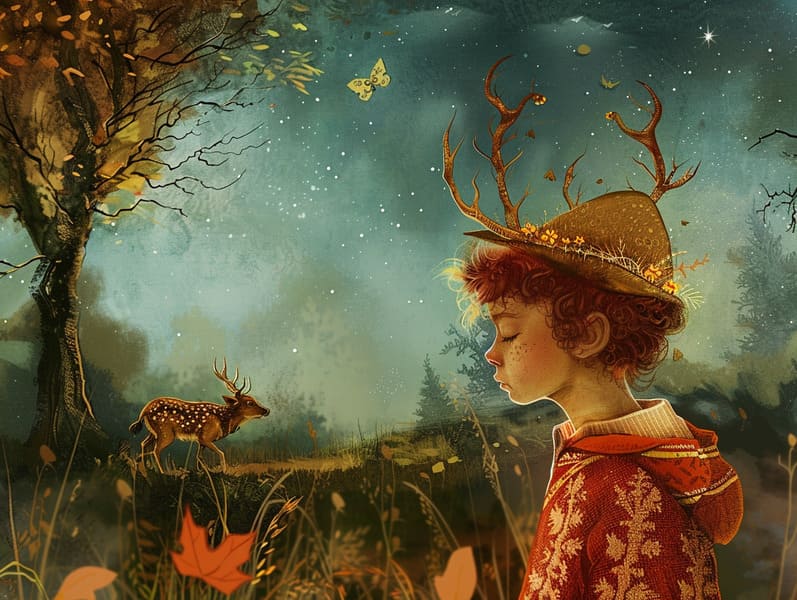The Creation of Popular Fairy Tales with Its Steadfast Fascination.
The Creation of Popular Fairy Tales with Its Steadfast Fascination.
Blog Article

Legendary fairy tales have deep roots. These stories have been spoken from one generation to the next millennia before they were ever transcribed. They developed from a variety of cultures, including Middle Eastern traditions. They were initially told among mature audiences, often carrying themes and messages related to the societal norms and beliefs of the time.
The Grimm brothers, Jacob and Wilhelm (the Grimm brothers), were among the first to gather and publish many of these beloved narratives. Their volume, "Grimm's Folk Tales," included tales like "The Story of Cinderella," "Little Brother and Little Sister," and "Snow-White and Rose-Red," which have since become pillars in the world of famous fairy tales. Similarly, the Danish author's fanciful tales, such as "The Mermaid's Tale," and "The Duckling's Story," have captivated hearts worldwide, guaranteeing their place in the pantheon of famous fairy tales.
Despite their ancient origins, fairy tales remain as applicable as ever, especially as kids' bedtime tales. These magical stories are now available in many formats, including richly illustrated books, fantastical animations, and web-based fairy tales.
Their enduring popularity can be connected to several charming aspects:
Ethical Lessons: Classic fairy tales often impart important moral lessons. Tales like "The Story of the Boy Who Cried Wolf" teach the benefit of truthfulness, while "The Race of the Tortoise and the Hare" underline the values of steadfastness and unassuming nature. These stories offer young readers clear distinctions between good and bad, molding their moral compass in a gentle yet profound way.
Empathy and Understanding: Traditional fairy tales frequently depict heroines facing difficulties and adversities, provoking children to relate with their struggles and rally behind their triumphs. For instance, "The Tale of Beauty and the Beast" illustrates the necessity of looking beyond appearances to comprehend the inner being of a individual, encouraging sympathy and comprehension.
Cultural Awareness: Many classic fairy tales are interwoven with the cultural contexts from which they grew. Immersing in these stories can provide enlightening views into different ways of life, developing a sense of world insight and appreciation.
Inventiveness and Fantasy: The magical elements in traditional fairy tales—supernatural elements—generate children’s fantasy worlds. These fairy tales bring readers to magical realms, encouraging inventive thinking and a sense of magic that persists a lifetime.
Old fairy tales are not only captivating but also teaching. They serve as fantastical tools in promoting various intellectual and emotional capacities in little ones. When traditional fairy tales are voiced, they develop speaking abilities by offering new words and complicated sentence structures. This practice also improves hearing abilities and focus, as little ones follow the story, expectant to see what happens next.
Furthermore, discussing the themes and characters of old fairy tales can promote analytical skills and evaluative skills. Young ones are shown to discern patterns, make predictions, and grasp cause and effect. These analyses also contribute to children express their thoughts and feelings, enhancing their emotional intelligence.
In today’s online age, the abundance of web-based fairy tales has made these tales more attainable than ever. Internet sites and online apps provide vast collections of classic fairy tales that can be browsed or listened to anytime, anywhere. Fairy tales voiced are particularly liked, providing an charming way for kids to be a part of these captivating stories. Sound books and narrated videos take characters and settings to life, often enhanced by entrancing sound effects and harmonies that boost the tale-telling adventure.
The timeless appeal of ancient fairy tales lies in their ability to evolve to the present while holding onto their essential themes. Contemporary revisions of these tales often incorporate more varied characters and modern settings, making them familiar to today’s audience. However, the fundamental themes of bravery, sympathy, and justness remain unchanged, continuing to touch audiences of all ages.
Classic fairy tales also offer a sense of ease and understanding. They distribute a methodical narrative with a transparent beginning, middle, and end, often drawing to a close with the settlement of conflicts and the triumph of justice over injustice. This regularity can be soothing for little ones, making known a sense of solidity in an fluid world.
Ancient fairy tales continue to enthrall and edify new generations, maintaining their splendor and value in modern society. As children's night stories, they bestow a perfect blend of wonder and wisdom, supporting moral values, empathy, and creativity. The prevalence of internet fairy tales and the sought after status of fairy tales spoken validate that these traditional narratives remain obtainable to new generations.
By safeguarding and disseminating these stories, we continue to glorify the rich tapestry of creativity and cultural heritage. Whether you are browsing a vividly illustrated book, browsing a digital collection, or listening through an read-aloud story, the beauty of timeless fairy tales is always within reach. These tales illustrate of the enduring power of storytelling and its ability to unite us across eras and regions.
If you are delving into a vividly illustrated book, accessing a internet library, or listening to an audiobook, the grace of famous fairy tales is check it out always within reach.
These narratives highlight of the unchanging presence of tales and its ability to join us across centuries and lands, casting a charm that delights and instructs alike.